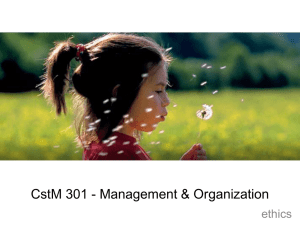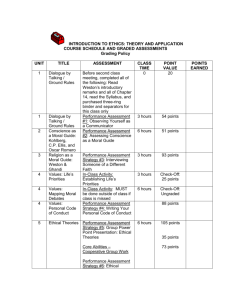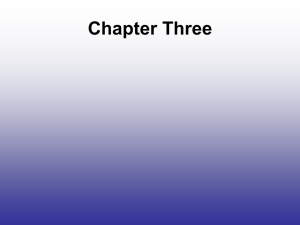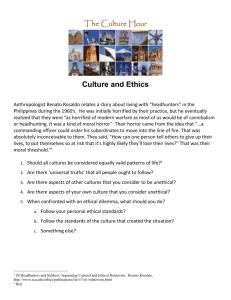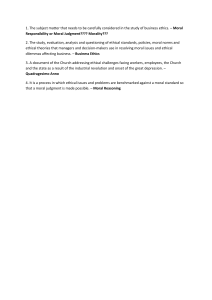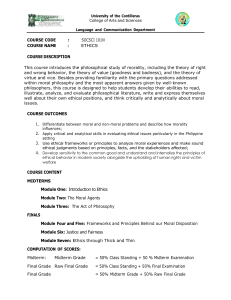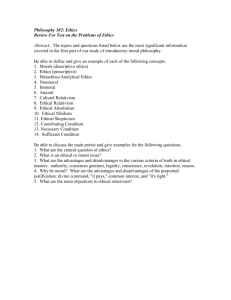An Outline for Ethical Decision
advertisement
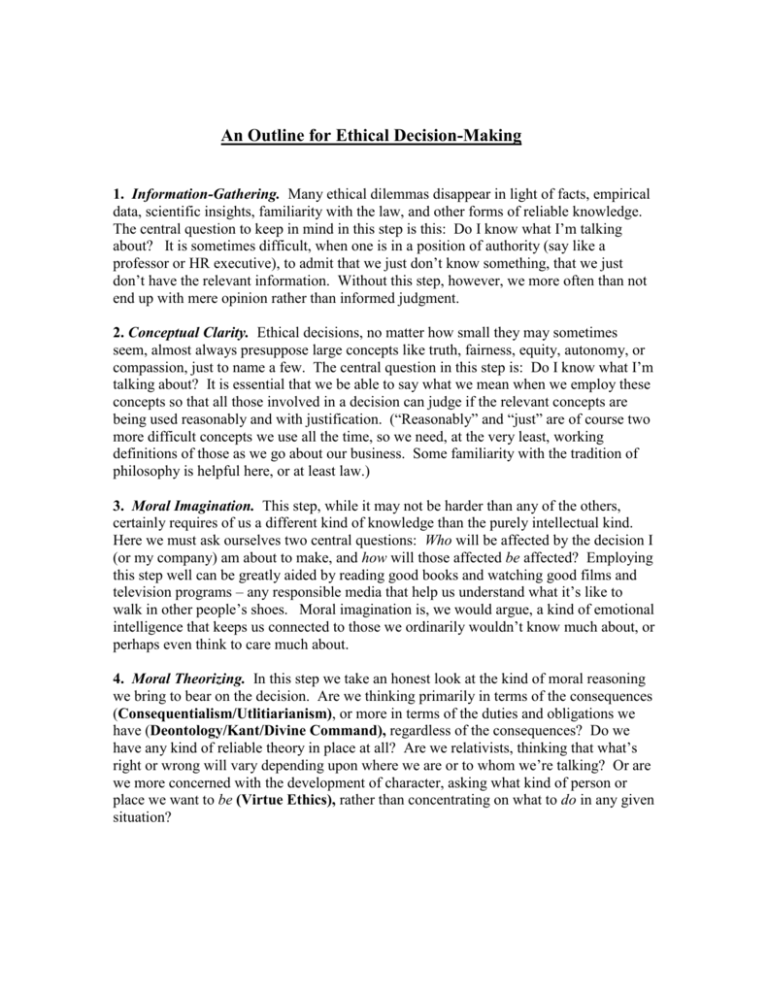
An Outline for Ethical Decision-Making 1. Information-Gathering. Many ethical dilemmas disappear in light of facts, empirical data, scientific insights, familiarity with the law, and other forms of reliable knowledge. The central question to keep in mind in this step is this: Do I know what I’m talking about? It is sometimes difficult, when one is in a position of authority (say like a professor or HR executive), to admit that we just don’t know something, that we just don’t have the relevant information. Without this step, however, we more often than not end up with mere opinion rather than informed judgment. 2. Conceptual Clarity. Ethical decisions, no matter how small they may sometimes seem, almost always presuppose large concepts like truth, fairness, equity, autonomy, or compassion, just to name a few. The central question in this step is: Do I know what I’m talking about? It is essential that we be able to say what we mean when we employ these concepts so that all those involved in a decision can judge if the relevant concepts are being used reasonably and with justification. (“Reasonably” and “just” are of course two more difficult concepts we use all the time, so we need, at the very least, working definitions of those as we go about our business. Some familiarity with the tradition of philosophy is helpful here, or at least law.) 3. Moral Imagination. This step, while it may not be harder than any of the others, certainly requires of us a different kind of knowledge than the purely intellectual kind. Here we must ask ourselves two central questions: Who will be affected by the decision I (or my company) am about to make, and how will those affected be affected? Employing this step well can be greatly aided by reading good books and watching good films and television programs – any responsible media that help us understand what it’s like to walk in other people’s shoes. Moral imagination is, we would argue, a kind of emotional intelligence that keeps us connected to those we ordinarily wouldn’t know much about, or perhaps even think to care much about. 4. Moral Theorizing. In this step we take an honest look at the kind of moral reasoning we bring to bear on the decision. Are we thinking primarily in terms of the consequences (Consequentialism/Utlitiarianism), or more in terms of the duties and obligations we have (Deontology/Kant/Divine Command), regardless of the consequences? Do we have any kind of reliable theory in place at all? Are we relativists, thinking that what’s right or wrong will vary depending upon where we are or to whom we’re talking? Or are we more concerned with the development of character, asking what kind of person or place we want to be (Virtue Ethics), rather than concentrating on what to do in any given situation? 5. Values. What are your values? Your company’s or institution’s values? Are they prioritized? Do you make conscious reference to them? Do you see and understand how they influence the workplace? Why, why not? Values include such things as Justice, Wit, Friendship, Stewardship, Honesty, Learning, Integrity, Service, Compassion, Respect, Loyalty, Accountability, Prudence, Humility, Courage, Innovation, Love, Profit, Sustainability, and a host of others. Any business or institution interested in ethical sustainability will devote some on-going time and energy to a good faith discussion of the compatibility of the business’s practices with what it holds to be its most important values. It is quite easy – and natural - to answer all the questions in the steps above through the lens of one particular value or another and so have the answers be more or less predetermined. Good faith practice means subjecting your values to the same scrutiny you would subject any other part of your business or institution to. These five steps – which are not so much linear as they are mutually reinforcing - are not easy to adhere to on a regular basis, but when they are followed it makes any decision you are considering much more transparent than it otherwise might be. Considered as a whole (all five steps practiced together), this process is what philosophers would call a necessary and sufficient method for coming to a decision. Any one, two, three, or four, while necessary, would be, without the fifth, insufficient. Going through these steps does not guarantee that the decision will be ethical, of course – the steps rely on the intelligence, understanding, and good will of the people employing them (while at the same time providing a model for developing those qualities). Neither does going through these steps guarantee there will be no disagreement as to the conclusion reached among people where you work or live. This process is not like punching numbers into a computer (and no one should wish ethics to be so). Ethics is best understood as learning how to think and argue well in support of notions of ideas and actions we want to consider “good” (or at least “better”) and “right.” This process, used regularly, will reflect back to you how you think about important matters, and may change your mind about them in the process. mdewilde - 2008

